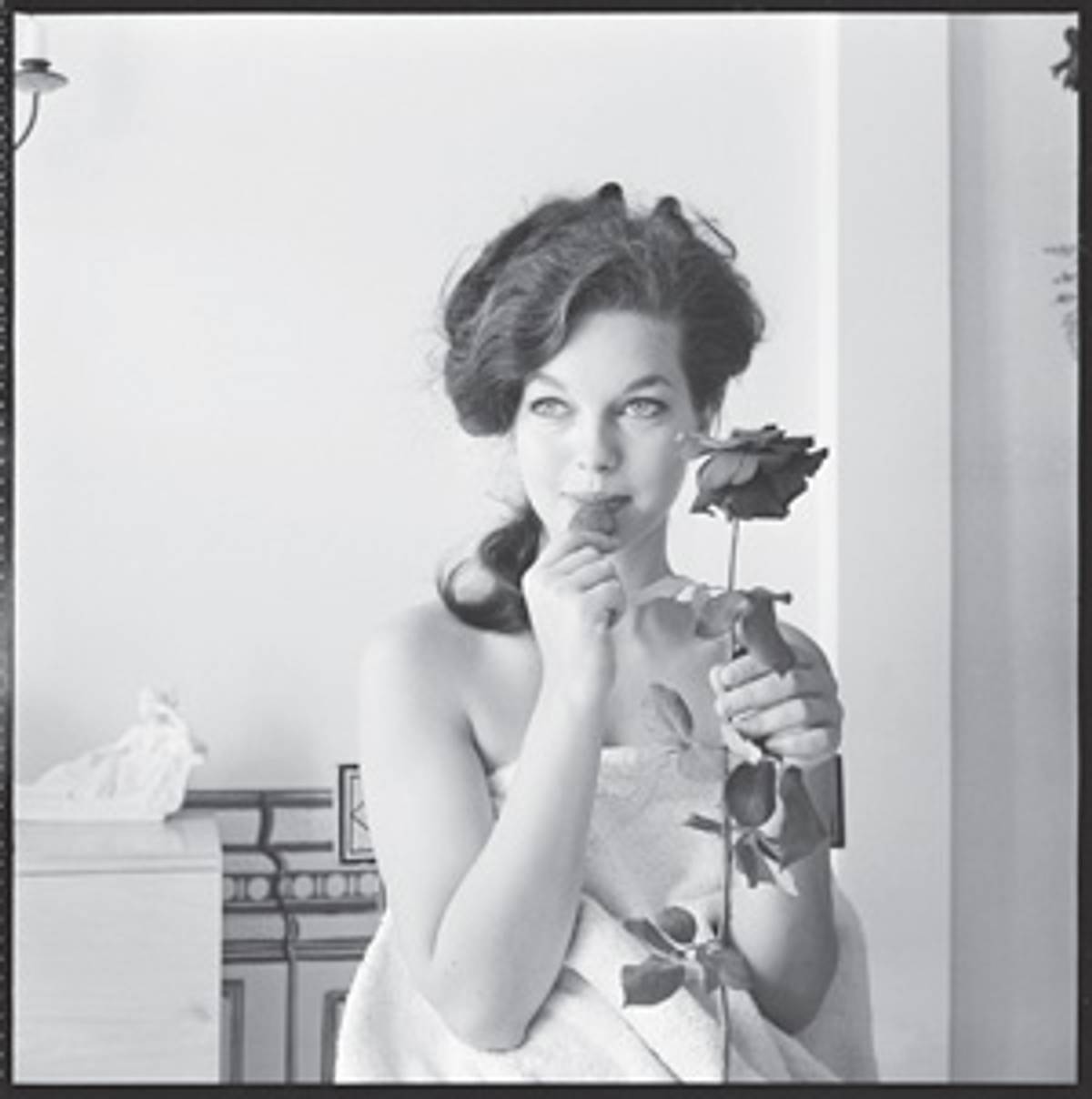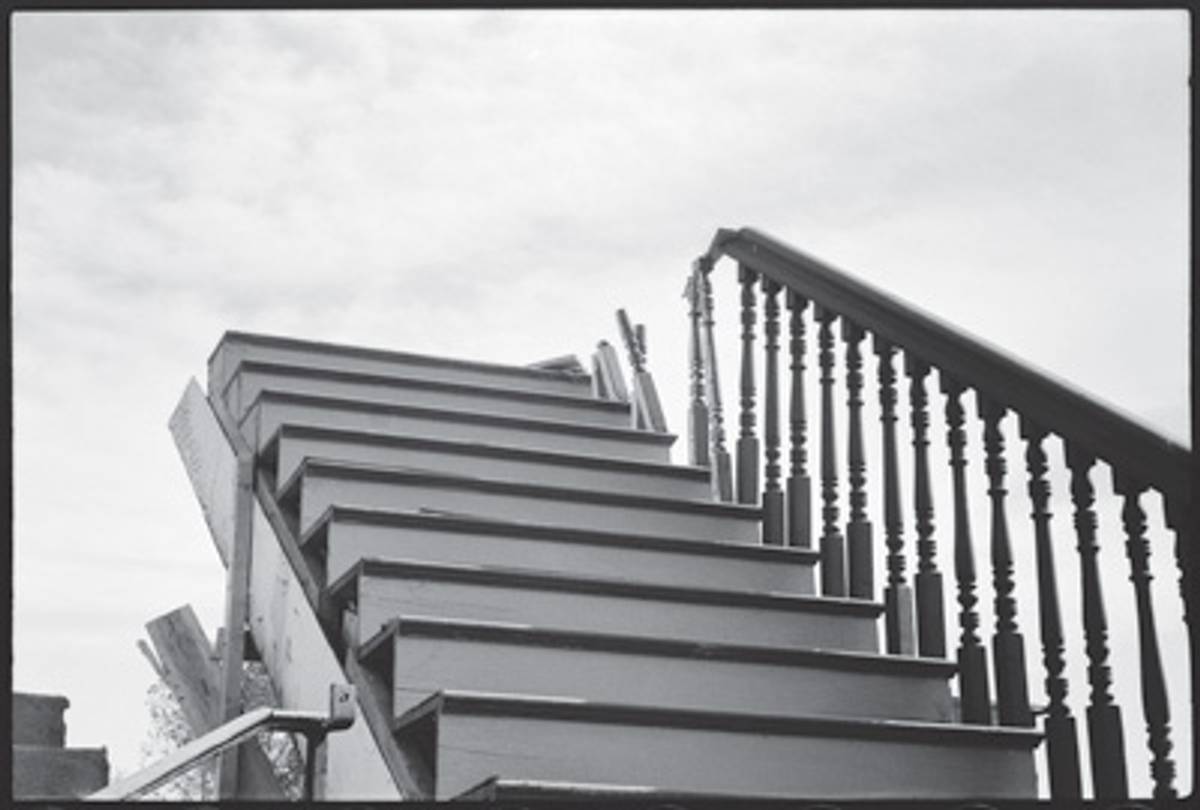[D]oes it really matter? And who would it matter to?” Bob Dylan asks in a brief Q&A at the beginning of Hollywood Foto-Rhetoric, a new book juxtaposing 23 of his poetic meditations with photographs by Barry Feinstein (the project had been lost—in other words, flat-out forgotten—for more than 40 years). He’s referring to his own writing, but he might as well be talking about our—or his—expectations for the project. Originally completed in 1964, just as Dylan was making the transition from the lingering folkie sensibility of Another Side of Bob Dylan to the full-on acid surrealism of Bringing It All Back Home, Highway 61 Revisited, and Blonde and Blonde, the work here presents Dylan at his most elusive, walking the line between social commentary and self-revelation, and riffing about Hollywood of all things, at the very moment he was about to be devoured by fame.

That the book should appear now makes for its own strange sort of irony, for this is the age of the retrospective Dylan, in which he has become reflective and, for him, accessible, willing to engage with his history even as he acknowledges (nudge, nudge, wink, wink) that it’s another pose. Partly, that’s a matter of pop star reinvention, but Dylan has never been a pop star in the traditional sense. Rather, he’s a one-man diaspora, who blew into Greenwich Village in 1961 like a figure out of what Greil Marcus has called the old, weird America.” As he wrote in Chronicles about 1941, the year of his birth,” Luc Sante notes in his foreword to Hollywood Foto-Rhetoric, ‘If you were born around this time or were living and alive, you could feel the old world go and the new one beginning. It was like putting the clock back to when B.C. became A.D. Everybody born around my time was a part of both.’”
What does it mean to be born at such a moment, when the verities are revealed as lies? What does it mean to have to reimagine everything, to rewrite the world from day to day? All of us now have a certain sense of that, living, as we do, in the aftermath. But for Dylan, this has meant a fundamental air of exile, which has, at times, led to some startling juxtapositions. When he appeared (with his son-in-law Peter Himmelman and actor Harry Dean Stanton) at the 1989 Chabad telethon in Los Angeles and performed Hava Nagila”, it was an experience equally bizarre, in its own way, to that of watching him sing Saved.”
Hollywood Foto-Rhetoric evokes these same sorts of tensions. It’s an unlikely project that ends up making unexpected sense. To be sure, the conflation of Dylan and Hollywood takes some getting used to, especially when you remember that 1964 was the year of the Beatles and the Freedom Summer, and thus, almost perfectly emblematic of the seismic social shift to which Chronicles refers. And yet, Dylan gives us a clue to the allure of the project in that same introductory Q&A. I liked Barry’s photos a lot,” he says. They reminded me of Robert Frank’s photos. … Just in their stark atmosphere.” In fact, they’re particularly reminiscent of Frank’s landmark collection The Americans, published six years before. In that book, Frank caught the United States, its small towns and cities, at the very moment it was undergoing the changes Dylan writes about.
Feinstein’s photos do something similar for Hollywood, tracing the eclipse of the old guard and its replacement by a more fluid territory of storefronts and star maps, and nondescript bungalows in which women smoke in cheaply paneled waiting rooms while others perform figure modeling” (read: pose nude). Among the images here is a sequence taken at Gary Cooper’s funeral, to which Dylan riffs:
looking at life
watchin it being lowered into the ground
unable t change a thing
you too
yes
have committed
some wicked sins.
It doesn’t matter whose funeral it is; Dylan’s being impressionistic, after all. What’s important is the idea that illusions cannot sustain us, which makes the dream factory, with its dependence on the manufactured image, the most nefarious sort of lie.

Such a notion resides at the heart of Hollywood Foto-Rhetoric, which is not a book of glamour shots but something more ambiguous, full of grainy black-and-whites that reveal a kind of flattened bleakness, the hunger and yearning beneath the surface of the myth. Even when celebrities are present, they’re not thinking of the camera. In one picture, Jayne Mansfield strolls along a walkway with a life-size statue of Jesus rising up behind her. In another, Judy Garland chews her thumb on a rehearsal stage. More often, Feinstein shoots along the edges, capturing discarded sets, extras at Central Casting, street scenes, makeup artists, waiting rooms. It’s the old, weird America transformed into a more modern disconnection, the diaspora gone Hollywood.
In such a landscape, Dylan discovers a perverse sort of freedom, the freedom to step outside himself. He’s lost, we’re all lost, but as any diasporic knows, that’s the point. What’s important are the contradictions (between past and present, celebrity and substance, social commentary and art), and what they tell us if we can just look at them clearly and see them for what they really are.
These are the issues that have always motivated Dylan, and he addresses them in language that is off the cuff, even spontaneous, simpler than his lyrics, although not without its own distinctive bite.
t be born with choice
t be carried free
out of cradled touch
clothed completely
in rapid change
he writes in a long poem that accompanies a photo of a discarded stairway, reaching up into the empty sky like a metaphor for the ephemerality of everything. In another poem, he observes that today no one thinks of / himself as the devil”; the implication, clearly, is that everyone should.
There’s a certain Old Testament morality at work here, the old world breaking through again, the glimmer of a connection that evaporates in the face of our flawed fragility and loss. Nowhere is this more movingly expressed than in an eight-line poem that accompanies two shots of Marilyn Monroe’s backyard swimming pool, taken on the morning of her death. Even then, perhaps, Dylan recognized Monroe as a cautionary symbol of the dangers of celebrity. death silenced her pool,” he writes,
the day she died
hovered over
her little toy dogs
but left no trace
of itself
at her
funeral.
Hollywood Foto-Rhetoric closes with an explicitly autobiographical poem in which Dylan writes about winning the Tom Paine Award from the Emergency Civil Liberties Committee in December 1963. At a ceremony just three weeks after the assassination of John F. Kennedy, he shocked the crowd by declaring, I have to be honest, I just got to be, as I got to admit that the man who shot President Kennedy, Lee Oswald, I don’t know exactly where—what he thought he was doing, but I got to admit honestly that I, too—I saw some of myself in him.”
From the perspective of the present, it’s obvious that Dylan was talking about shared complicity, the idea that we are all responsible, that a society is only as good as its basest impulses, its most destructive acts. This, of course, is a classically Jewish notion, although he probably didn’t think of it in those terms. Either way, the experience stayed with him, and is recounted here alongside a group of photos of disembodied hands clutching Oscar statuettes. ah mama but it’s so hard,” he writes,
for I’m living in movement
not stopping an categorizing
the movement
an so
I could not explain t them
about what I was doin
instead I finished
my thoughts
without compromise
(a course
of course
for none
but one).
Here, we see Dylan at his most elemental, as he has always seen himself. a course / of course / for none / but one”—that’s the code of the exile, born between cultures, between generations, with one foot in the past and one in the future, yet condemned to live in the unreconciled present tense. It’s a hell of a wilderness in which to wander, and Dylan’s known this from the start.
i cupped it t my breast,” he writes, describing his reaction to the Paine Award,
looked into its eyes
stroked it
fixed it as a club
pretended it was a barbell
the room was silent mama
the room was silent
except for this hysterical laughin
stemmin from the ridiculousness
of such useless property
but i couldn’t tell
who was laughing mama
i couldn’t tell if it was me
or this thing
i was holding.
David L. Ulin is book editor of the Los Angeles Times. He is the author of The Myth of Solid Ground: Earthquakes, Prediction, and the Fault Line Between Reason and Faith, and editor of Another City: Writing from Los Angeles and Writing Los Angeles: A Literary Anthology.
David L. Ulin is book editor of the Los Angeles Times. He is the author of The Myth of Solid Ground: Earthquakes, Prediction, and the Fault Line Between Reason and Faith, and editor of Another City: Writing from Los Angeles and Writing Los Angeles: A Literary Anthology.